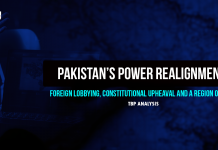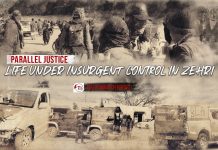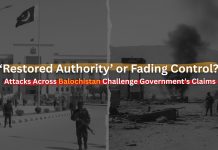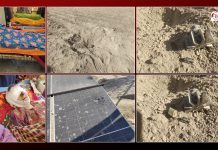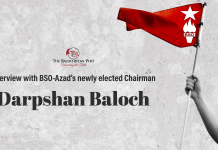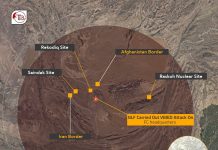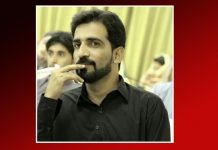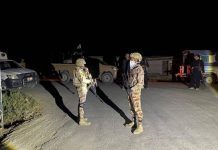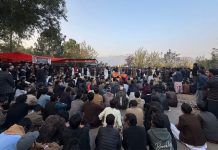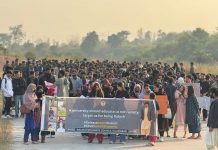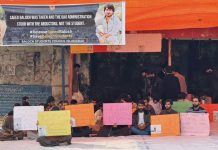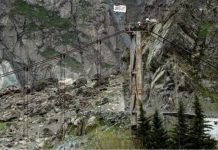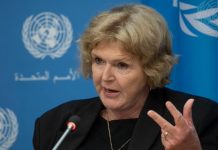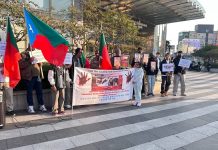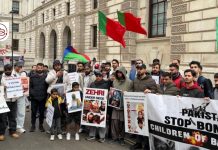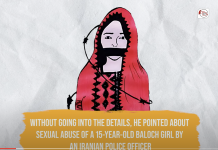By Anees Baranzai and Asif Baloch
On the night between August 25 and 26, the Baloch ‘peo-independence’ armed group, the Baloch Liberation Army (BLA), initiated a series of coordinated, sequential attacks across Balochistan. Hundreds of fighters from BLA’s Majeed Brigade, STOS, and Fatah Squad participated, challenging the state’s writ for twenty hours and establishing effective control over Balochistan for a short period. The BLA named this operation ‘Herof.’ Herof is a word from the Balochi and Brahui languages, meaning ‘black storm.’
Operation Herof was the fourth major operation by the BLA’s suicide unit, Majeed Brigade. Before this, the BLA’s Majeed Brigade had conducted Operation Zarpahazag (May 11, 2019, August 20, 2022, August 13, 2023, March 20, 2024, March 25, 2024), Operation Ganjal (February 2, 2022), and Operation Darra-e-Bolan (January 29, 2024). Various defense analysts have termed all these operations as successful. However, among all these attacks, Operation Herof can be considered the largest military action in the history of Baloch armed resistance, during which the BLA maintained control over key roads and important locations from Makran to Koh-e-Suleman for twenty hours, effectively eliminating the state’s writ.
What are the reasons for BLA’s success?
For over two decades, the Baloch Liberation Army had maintained a low-intensity insurgency in Balochistan using traditional guerrilla warfare techniques. However, in 2018 and the years following, the BLA started a series of suicide attacks and complex, coordinated operations, presenting a new, significant challenge to the state of Pakistan. To understand the reasons for these attacks, we need to look into the internal story of the Baloch Liberation Army, which may help in understanding the causes of their successes.
The Baloch Liberation Army began modernizing its traditional guerrilla operations when the BLA underwent major institutional changes, established new institutions, and, after reorganization, selected Aslam Baloch, also known as General Aslam, as its leader. Subsequently, on August 11, 2018, the second suicide bomber of the BLA’s Majeed Brigade, Rehan Aslam, the son of BLA chief Aslam Baloch, targeted a bus carrying Chinese engineers in Dalbandin, Balochistan, reviving the Majeed Brigade.
The Majeed Brigade is a suicide unit of highly trained BLA fighters, named after a senior commander of the BLA, Majeed II, who was killed on March 17, 2010, in a clash with the Pakistani military near Golimar Chowk in Quetta. The Majeed Brigade carried out its first attack on December 31, 2011, by targeting the alleged ‘death squad’ leader Shafiq Mengal. After a long silence, the Majeed Brigade targeted a convoy of Chinese engineers at Dalbandin on August 11, 2018. Since then, the BLA’s Majeed Brigade has carried out twelve major suicide attacks in Karachi, Gwadar, Turbat, Panjgur, Nushki, Bolan, and Bela, involving 64 suicide bombers. Since the August 11, 2018, suicide attack, the BLA has launched severe attacks on key military targets of the Pakistani military in Balochistan, their economic interests, the China-Pakistan Economic Corridor, and international investors.
Apart from the change in leadership within the Baloch Liberation Army, another major reason for these successful and impactful attacks is public support. The silent majority of the Baloch nation leans towards the BLA, which is the fundamental reason why the Pakistani state and military have not been able to control the BLA, despite their utmost efforts.
The primary stance and narrative of the Baloch Liberation Army is that Pakistan is forcibly occupying Balochistan, and the BLA is the national army of the Baloch people, fighting for liberation from this occupation. The BLA has been steadfast in its fundamental stance of ‘Balochistan’s independence’ for the last twenty-five years, engaging in combat with the Pakistani military. Due to the historical accuracy of the BLA’s stance and its unwavering commitment for twenty-five years, the Baloch people hold a soft corner for them and provide practical support.
On the other hand, alleged oppression and atrocities by Pakistan in Balochistan have been ongoing for decades. Enforced disappearances, mutilated bodies, military operations, and economic and expansionist policies have caused the state of Pakistan to lose the practical support of the Baloch people. Whatever support is shown in propaganda often hides fear or greed behind it.
In projects like the China-Pakistan Economic Corridor, the participation of the Baloch people is minimal. Meanwhile, actions such as the fencing of the Goldsmith Line separating Western and Eastern Balochistan and restricting business activities further affirm the BLA’s stance that economic progress for the Baloch people is not possible within Pakistan’s system.
Reasons for BLA’s Growing Public Support:
Analysts observing the Baloch insurgency believe that due to state restrictions on surface-level politics or peaceful struggles, all other avenues for Baloch youth to raise their voices have been blocked. Merely for holding rallies, processions, and press conferences, Balochs are abducted and subjected to torture; often, they are brutally killed to silence them. As a result, Baloch youth see no other path besides armed struggle. Among Baloch nationalist circles, the general opinion is, “We are being killed anyway, so it’s better to die resisting than to die unarmed.”
Looking solely at student politics, former Chairman of Baloch Students Organization (Azad) Zahid Baloch was forcibly disappeared on March 18, 2014; Vice Chairman Zakir Majeed on June 8, 2009; Information Secretary Shabbir Baloch on October 4, 2014; and BNM leader Dr. Deen Mohammad Baloch on June 28, 2009, all of whom remain missing to this day. These are just a few names; besides them, thousands of political workers have been forcibly disappeared, and there is no information about where they are or their current condition.
On April 3, 2009, Baloch National Movement (BNM) Chairman Ghulam Mohammad Baloch, along with Central Committee members Lala Munir and Sher Mohammad, was detained by Pakistani forces from their lawyer Kachkol Ali Advocate’s chamber in Turbat. On April 9, 2009, their mutilated bodies were found in the outskirts of Turbat near Margaap. Similarly, BNM Secretary General Dr. Manan was killed along with five other companions by Pakistani forces on January 30, 2016, in Mastung. Central leader of the Baloch Republican Party, Jaleel Reki, was detained by Pakistani forces on February 13, 2009, and his mutilated body was recovered from District Kech on November 24, 2011. Former Vice Chairman of BSO Azad, Sangat Sana Baloch, was detained by forces on December 7, 2009, and his body was found in Turbat on February 13, 2012. BSO Azad Secretary General Raza Jahangir was killed by forces in Turbat on August 14, 2013, along with BNM leader Imdad Bajeer. BSO Azad Central Committee leaders Kambar Chakar and Ilyas Nazar were forcibly disappeared and later found murdered on February 5, 2011, with their mutilated bodies dumped together. Besides them, hundreds of political workers have allegedly been killed by the Pakistani military, either directly or through infamous death squads.
Baloch nationalist circles believe that Pakistan has been using force since day one to suppress the emerging political movements in Balochistan. A recent example of this can be seen in how Pakistani forces blocked all routes during the Baloch Raji Muchi organized by the Baloch Yakjehti Committee, preventing people from reaching Gwadar. This once again sends a message to Baloch youth that in Balochistan, the only way to raise a voice is through arms; otherwise, peaceful voices are brutally silenced forever.
Due to its own flawed policies, the state of Pakistan has practically lost all public support in Balochistan, creating a more conducive environment for Baloch armed organizations. The historical truth of occupation and the behavior of the Pakistani military have inclined the Baloch people’s sympathies and support toward armed independence groups, leading to an increasing number of youth joining armed organizations.
Even within the BLA, leadership and combat have transferred from the first generation to the second and now to the third. With each transition of leadership, BLA’s attacks have intensified and become more sophisticated.
Another often overlooked reason for the BLA’s growing public support is the minimal damage caused to public property and civilian lives during their armed struggle. For the past 25 years, the BLA has been particularly focused on ensuring that their attacks do not harm the Baloch public. On the other hand, the Pakistani military has caused far more civilian casualties and damage to property. For instance, when the BLA sets up checkpoints on Balochistan’s highways, they respectfully allow ambulances and women and children to pass, whereas the situation at Pakistani military checkpoints is the exact opposite. Due to this, the BLA’s narrative that the Pakistani military is an occupier and that the BLA is fighting a defensive war for the Baloch nation is gaining more strength among the people.
State Narrative vs. Ground Realities:
The state’s narrative has always been that the insurgency in Balochistan is due to foreign interference, a claim that holds truth only within the realm of state propaganda aimed at crafting a favorable public opinion. However, the ground realities are quite the opposite. In the BLA, educated youth are willingly sacrificing their lives, wealth, and careers to participate in the struggle. No rational, educated person would sacrifice their life merely for money. For a recent example, consider the female fidayeen in the BLA: Shari Baloch, who was pursuing an M.Phil; Summaiya Baloch, who was associated with journalism; and Mahal Baloch, a law student.
Suleman Hamal, who participated in the BLA’s Majeed Brigade attack on the Karachi Stock Exchange, was a writer and poet. Another fidayee, Hammal Momin, who took part in Operation Darra-e-Bolan, was a novelist. Many of the fidayeen in the Majeed Brigade have had some connection to intellectual or literary circles. This is one of the reasons why the state’s narrative against Baloch resistance fighters has not gained any traction among the public.
A brief look at the other fidayeen of the Majeed Brigade reveals the same pattern. Abdul Razaq Baloch, who participated in the attack on the Chinese Consulate in Karachi, was an educated youth and a poet. Badal Baloch, the commander of the Noshki FC Camp operation during Operation Ganjal, was not only a highly educated graduate of Balochistan University but also a columnist fluent in Balochi, Urdu, and English. Another attacker in the same operation, Rauf Baloch, wrote poetry and columns in Urdu and Balochi, while Yasir Noor was also a columnist. Aziz Zehri was well-known as a poet in the Brahui language, while Murad Ajo was a poet and author in Balochi. In the second phase of Operation Ganjal, during the Panjgur attack, Sami Sameer, one of the attackers, was considered one of the best football players in the Panjgur district of Balochistan. Hamid and Ilyas, who commanded the same attack, were also well-known football players. Atta Baloch, who commanded Operation Darra-e-Bolan, was a writer and poet, and Zeeshan Zehri was a Hafiz-e-Quran. In the fourth phase of Operation Zarpehazag in Gwadar, Babar Nasir and Khalif Baloch, who were involved in the attack, were both educated writers and poets.
Another state narrative is that only a handful of individuals or a few tribal chiefs are responsible for the ongoing war for independence in Balochistan. However, in recent days, the Balochistan government has placed at least three thousand individuals, including professors, student leaders, and people from various fields, on the Fourth Schedule, accusing them of being affiliated with the Baloch Liberation Army. This contradicts the state’s own narrative and affirms that the BLA has the support of Balochistan’s educated class. As for the tribal chiefs, not a single Baloch chieftain is currently involved in the independence struggle. All of them have been co-opted by the Pakistani military through contracts and ministries, securing their loyalty to the state. Traditionally, the state labeled three tribal chiefs — of the Marri, Bugti, and Mengal tribes — as anti-state, but now even they are aligned with Pakistan. After the death of Nawab Khair Bakhsh Marri, his successor, Nawab Changez Marri, has joined the Muslim League (N) and is involved in federal politics. The current chief of the Bugti tribe, Aali Bugti, lives under military protection in Karachi. Akhtar Mengal, political heir of Attaullah Mengal, has always operated within the state’s political framework.
Conclusion:
This analysis demonstrates that the new strength and influence of the BLA are neither due to foreign interventions nor supported by traditional tribal powers in Balochistan. Instead, its success stems from the following factors:
- The BLA distancing itself from tribal influence and restructuring into a fully organized institution.
- Expanding its activities beyond the mountains and proving itself as a popular movement.
- Capturing the attention of the educated Baloch youth.
- Gaining widespread support from the Baloch people to the extent that coordinated attacks like Operation Herof can be executed.
- Maintaining the same stance for 25 years despite making numerous sacrifices, which has earned the trust of the public.
In addition to these factors, the Baloch Liberation Army’s focus on various non-military fronts such as journalism, politics, diplomacy, propaganda, and literature, along with its success in these areas, has contributed to the increase in its power.
Considering these points, it wouldn’t be mere speculation to suggest that the intensity of the ongoing conflict in Balochistan may see a dramatic increase in the coming times.

